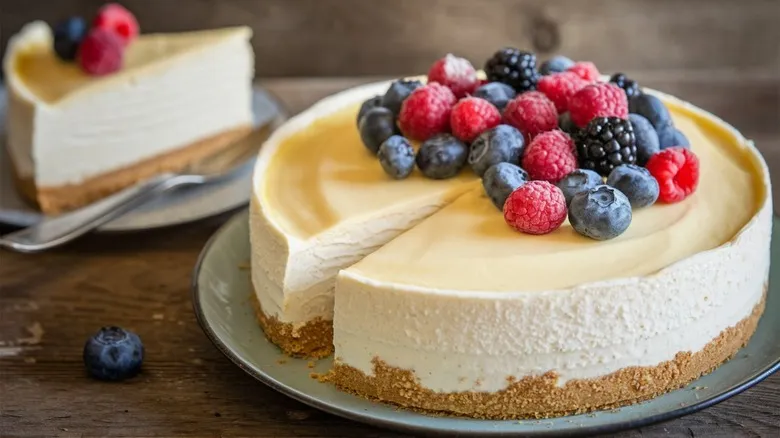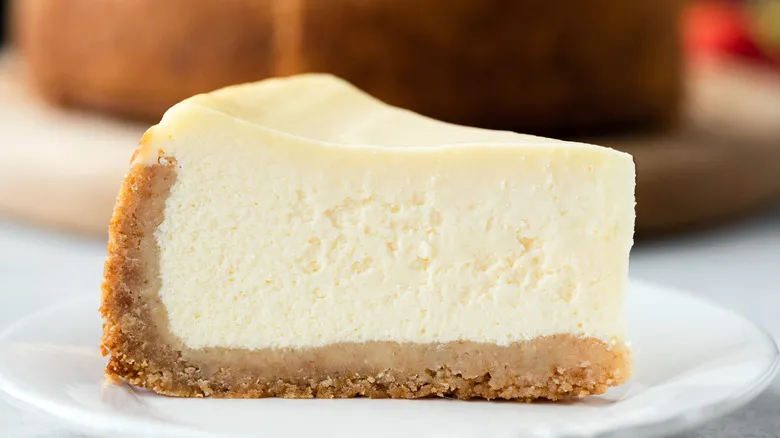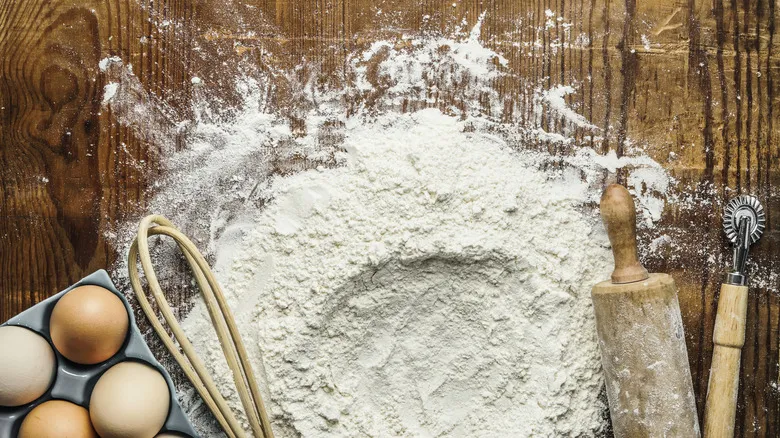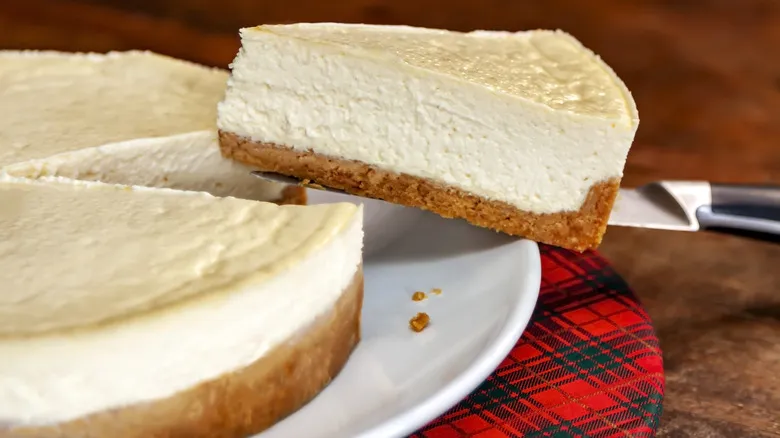Troubleshooting cheesecake cracks and fissures

When it comes to creating a creamy, tangy cheesecake with a flawlessly smooth surface, using a water bath can be incredibly beneficial. Not only does it help maintain the cheesecake's moisture, as previously noted, but it also provides extra insulation, allowing it to cool more gradually. This added moisture prevents the cheesecake from seizing, which in turn helps avoid cracks. However, if your cheesecake still develops cracks despite these measures, the issue may stem from other factors.
For example, overmixing the cheesecake batter is a common culprit for cracks. This occurs because mixing incorporates air into the batter. An excess of air can cause the cheesecake to expand rapidly in the oven and then collapse, leading to a split top and a dense, flat texture instead of a light and airy one. To avoid this, ensure your ingredients are at room temperature and that your cream cheese is soft, allowing for easy blending.
If you overlook these tips and your cheesecake cracks anyway, there's no need to panic; you can still serve an impressive dessert. As mentioned earlier, small, shallow cracks can be easily concealed with a rich chocolate ganache or a glossy white chocolate mirror glaze. For larger cracks, consider using whipped cream to create a fluffy swirl, topped with graham cracker crumbs. Another quick solution is to macerate some berries with a bit of sugar or honey and spoon them over the cheesecake for a shiny and delicious finishing touch.
Recommended

What Makes New York Cheesecake Its Own Thing

Save Ugly Store-Bought Cakes With This Simple Decorating Tip

The Store-Bought Secret To Quick Homemade 'Baguettes'

Why You Might Want To Use Less Flour In Your Banana Bread
Next up

